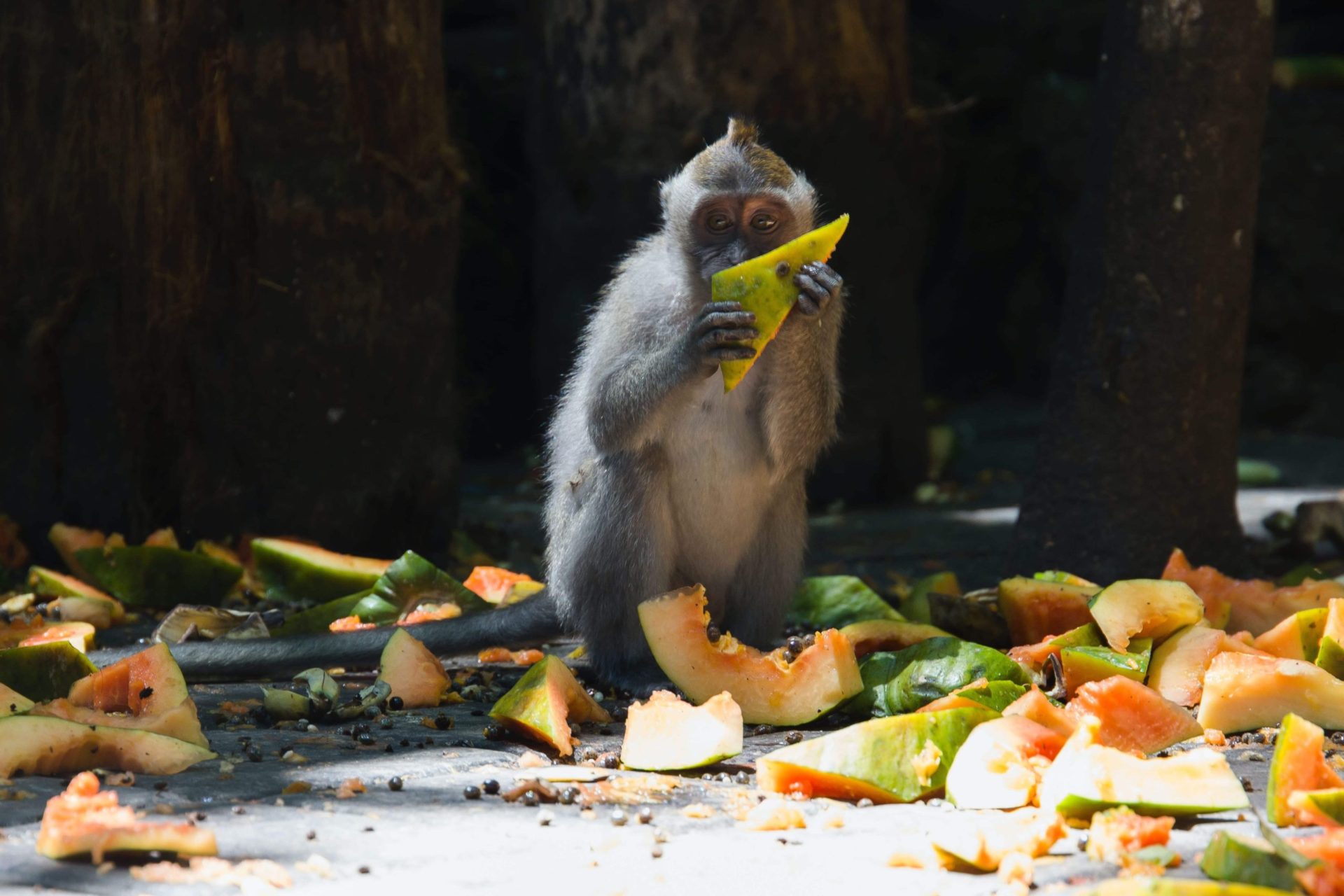
Scary Monkeys in Indonesia
Are Monkeys in Indonesia dangerous? – Well, they can be
Here you will learn everything about the monkey, roaming around the streets of Indonesia. – How to act around them and what not to do! I also put together a list of Places where you will definitely encounter monkeys.
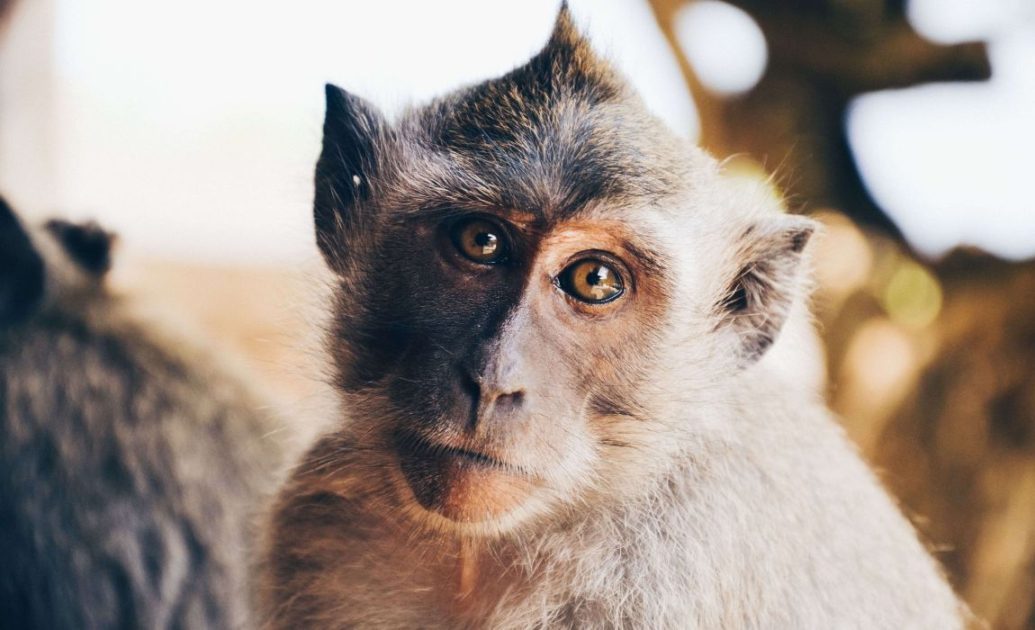
You can basically find them anywhere – within temples, forests, or just on the beach, monkeys in Indonesia and especially Bali can cross your path at (almost) any moment. The Monkeys in Indonesia come in all shapes and sizes but the most common is the Long Tale Macaque, also called Monyet.
And I mean, they have been here before all the tourists came and they can be cute as well. But honestly, sometimes they can get quite grumpy. I mean, who wouldn´t? Having to pose for pictures with tourists that just don´t understand that those harmless-looking monkeys are still wild animals – and that´s when bad things happen.
The macaques are cheeky and always try to get food. Since they are not hunted and know tourists usually have some food, they are anything but shy. There are partly stories of unpleasant encounters with the monkeys. However, these are often due to the wrong behavior of humans. With a little care, the interaction with the monkeys should happen without any problems.
Here is what you need to know before approaching monkeys in Indonesia
Feeding the Monkeys in Indonesian Temples and Monkey Forests
It is best not to carry food at all, or at least not visibly because the Monyets love food and are used to tourists feeding them. They sometimes try to get large supplies by force. If you want to feed the monkeys after all: Hand the food with an open calm hand, then the monkey can easily get it and in case of doubt you can quickly drop it.
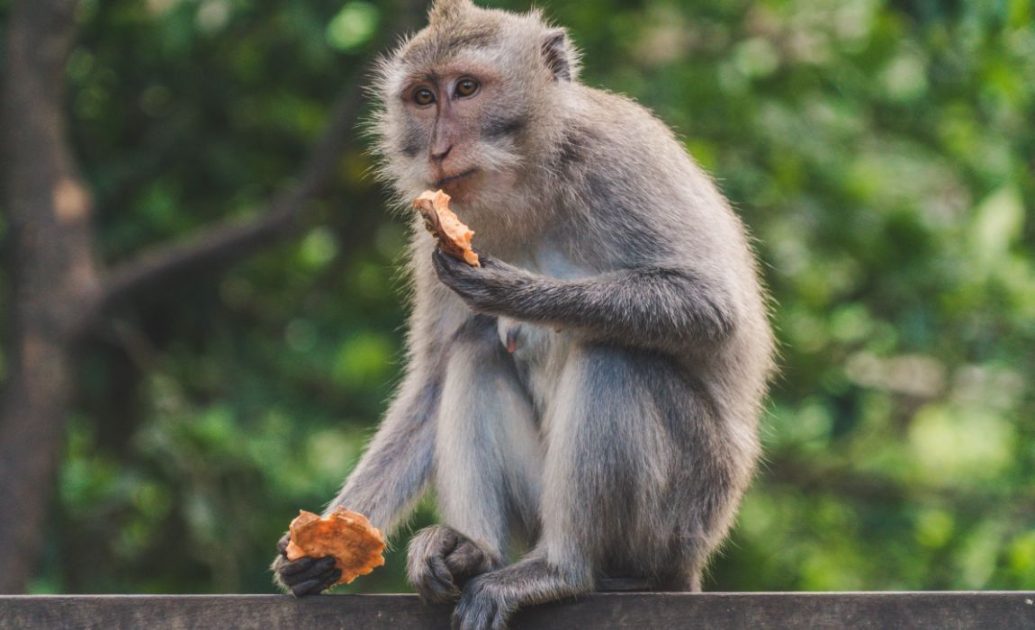
Afternoons are usually the better time to feed because in the morning the monkeys are even hungrier and wilder. Young animals should not be fed as a matter of principle, since the mothers might defend their offspring.
Baby Monkeys
You should not touch or stroke the monkeys, especially young animals or mothers with young in any case, the animals defend their offspring to the utmost with their claws and sharp teeth.
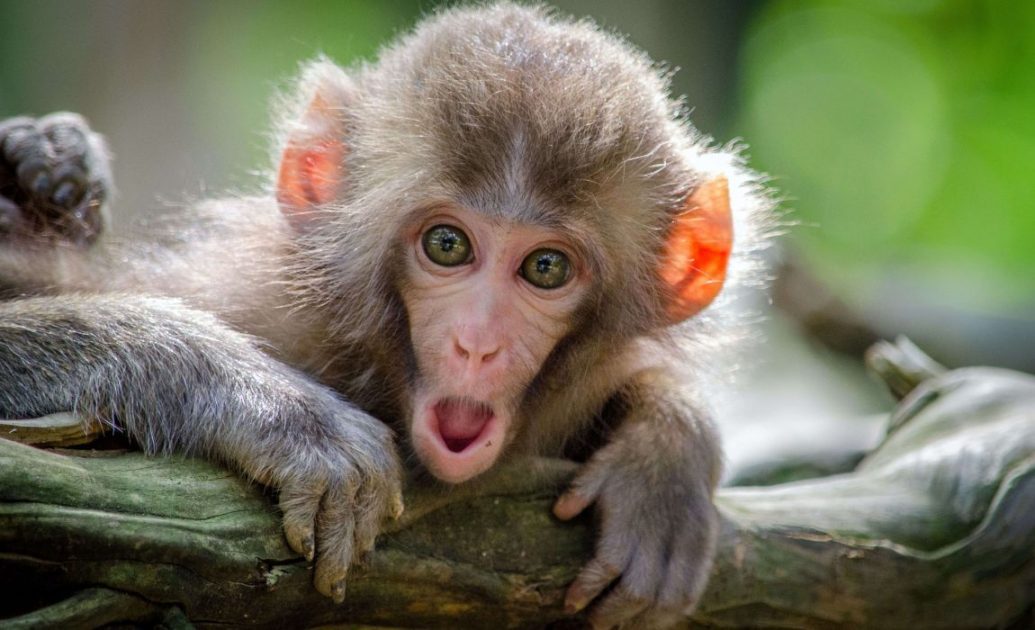
Also, you should in no case throw stones at the animals to defend yourself. In case of a threat, they will stick together as a group to counterattack.
Eye-contact and Smiling
Avoid direct eye contact with the animals and also do not smile at them, as this can be interpreted as a sign of aggression.
Questionable Photo Offers
Offers like photos with monkeys on the shoulder (some guides have such “good” ideas) should be rejected. If you absolutely want to take a picture with the monkey on your arm, you should at least wear long clothes.
Smartphones, Cameras and Sunglasses
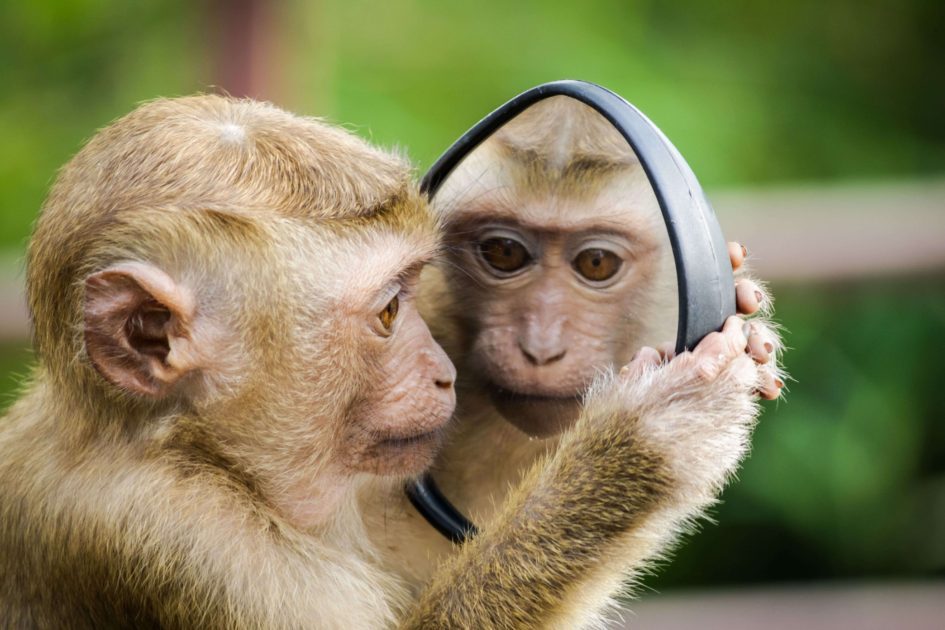
Also hide sunglasses, smartphones, and cameras in your backpack. Monkeys will grab not only food but any items they can find. This includes bottles or hats dangling from your backpack. Sometimes you can get your property back in exchange for something edible, but only sometimes. Most importantly, don’t fight over objects! The monkeys have sharp teeth and like to bite if they feel threatened.
In case you are bitten by a monkey, clean and disinfect the wound and go to the nearest clinic to protect yourself against rabies and tetanus. Even if Indonesia is “officially” free of rabies, better be safe than sorry!
Monkey Forests in Indonesia
The monkey forest of Ubud
The most famous monkey forest is located on the outskirts of Ubud and has over 10,000 visitors per month. Its official name is Padangtegal Mandala Wisata Wanara Wana Sacred Monkey Forest Sanctuary. Here more than 700 macaques live in a beautiful forest among rocks, statues and a sacred water source. The paths are well laid out and lead to a central plaza in the middle.
Sangeh Monkey Forest
The Sangeh Monkey Forest in Badung is also revered as a sacred forest. It impresses with an area of 10 hectares, which is covered with nutmeg trees up to 40 meters high. In addition to the overwhelmingly tall nutmeg trees, the tropical forest is home to 28 other tree species.
Several hundred monkeys inhabit the forest.
Overall there are 3 groups of monkeys, each having its own territory. There is also an extensive area with souvenir stalls, a restaurant, and a toilet, and even before entering the forest, guides offer their (not necessarily needed) services.
Alas Kedaton
Only 3 kilometers from Mengwi and Sangeh is the village of Blayu with its monkey forest Alas Kedaton. It is quite large with 12,000 ha and is not as busy as Sangeh or Ubud. In the forest one can find the temple Pura Alas Kedaton, which is not accessible to tourists.

But there is a path for making your way around it. Besides the monkeys, a colony of flying foxes is the highlight of the forest, hanging upside down from the trees.
Indonesian Temples with Monkeys
Temple Ulu Watu
At the temple Ulu Watu at the southern tip of Bali many monkeys run around freely. They are, so to speak, the encore to the temple visit. Again, the macaques are thieves and even if they are not as accustomed to feeding as their colleagues in the monkey forests, you should never carry any snacks or fruit openly.
Pulaki temple
Pulaki Temple is located in the northwest of Bali (Buleleng) right by the sea. Here you can enjoy the view, immerse yourself in the culture of Bali and watch the monkeys play.
Somewhat unusual here appear the cages around the altars. These are not to confine the monkeys, but protect the offerings and give the people their necessary space while praying.

Wrapping Up
So overall I can say that monkeys are not scary. They are just wild animals and tourists should respect that at all times. While I was in different Monkey Forests and Indonesian Temples, where they had monkeys, I can say, that I saw so many people that were just acting as if the monkeys were some kind of plush animal. Almost every time it is human behavior that turns an encounter with a monkey into a dangerous situation. Please make sure to follow the guidelines provided on how to act around the monkeys in Indonesia and I am sure you will have a wonderful time!
This article may contain affiliate links. I receive a small commission when you purchase products or services through these links at absolutely no extra cost to you. This is a free way to support me and allow me to continue to create inspiring adventure travel guides. See my disclosure notice for more information.
